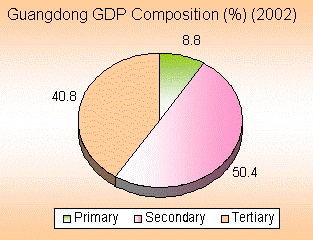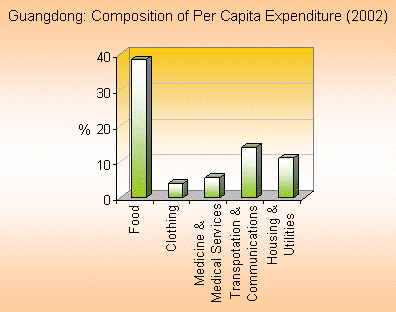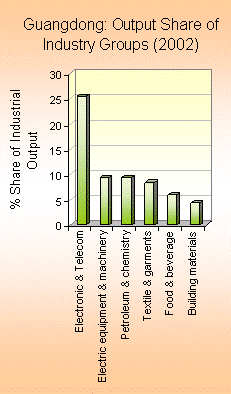
|
|
|
|
|
|
|
|
|
|
|
|
|
|
|
|
|
|
|
|
|
|
|
|
|
|
|
|
|
|
|
|
|
|
|
|
|
Country Information
|
|||||||||||||||||||||||||||||||||||||||||||||||||||||||||||||
|
Guangdong Province |
|||||||||||||||||||||||||||||||||||||||||||||||||||||||||||||
 |
Guangdong is a coastal province with a coast line of 3368 km in the south western corner of China. The Pearl River (third longest in China at 2,122 km) drains the province via the rich Pearl River delta into the South China Sea. This is the ancestral province of many of the Chinese diaspora overseas. Guangdong is the leading province economic output. Amongst all provinces and municipalities, It has:
|
||||||||||||||||||||||||||||||||||||||||||||||||||||||||||||
| Governor |
Huang Huahua |
||||||||||||||||||||||||||||||||||||||||||||||||||||||||||||
| Area |
180,000 sq. km. |
||||||||||||||||||||||||||||||||||||||||||||||||||||||||||||
| Population |
79.54 million (2003) |
||||||||||||||||||||||||||||||||||||||||||||||||||||||||||||
| Capital |
Guangzhou |
||||||||||||||||||||||||||||||||||||||||||||||||||||||||||||
| Resources |
Abundant water (4,735 cubic meters per capita) well above the national average. Rich mineral resources, particularly rare and nonferrous metal. Has reserves of kaolin, peat, metallurgical gangue, trachyte for cement making, germanium, antimony silver, lead, bismuth, thallium, uranium, monazite, glass silicon, oil shale, marble for surface decoration and diabase rank the second in the country. Standing timber reserves amount to 300 million cubic meters. (57% cover of the province). Species include pine. Chinese catalpa and eucalypts. Among the 200 varieties of fruit grown in Guangdong are pineapples, bananas litchi, longans and oranges. The province has a theoretical reserved hydropower capacity of 10.73 million KW and a practical capacity of 6.66 million KW, of which 60% has been harnessed. |
||||||||||||||||||||||||||||||||||||||||||||||||||||||||||||
| Cities |
Chaozhou; Dongguan; Foshan;
Guangzhou; Heyuan; Huizhou; Jiangmen; Jieyang; Maoming; Qingyuan; Shantou;
Shaoguan; Shanwei; Yangiang; Zhanjiang; Zhongshan; Zhuhai. |
||||||||||||||||||||||||||||||||||||||||||||||||||||||||||||
| Economic indicators (2003) |
|
||||||||||||||||||||||||||||||||||||||||||||||||||||||||||||
|
Economic indicators of selected cities (2002) |
|
||||||||||||||||||||||||||||||||||||||||||||||||||||||||||||
|
|
|
|


